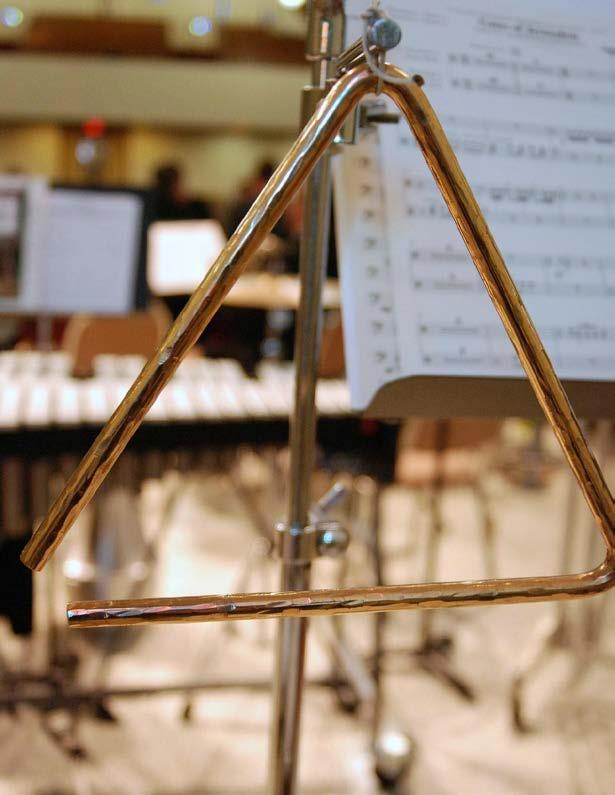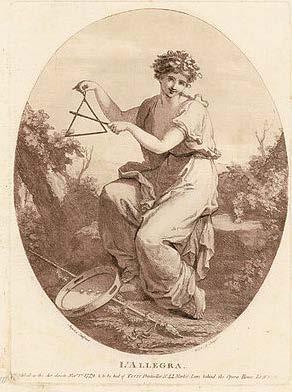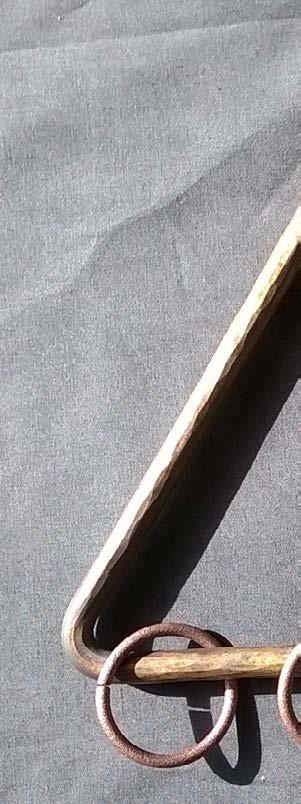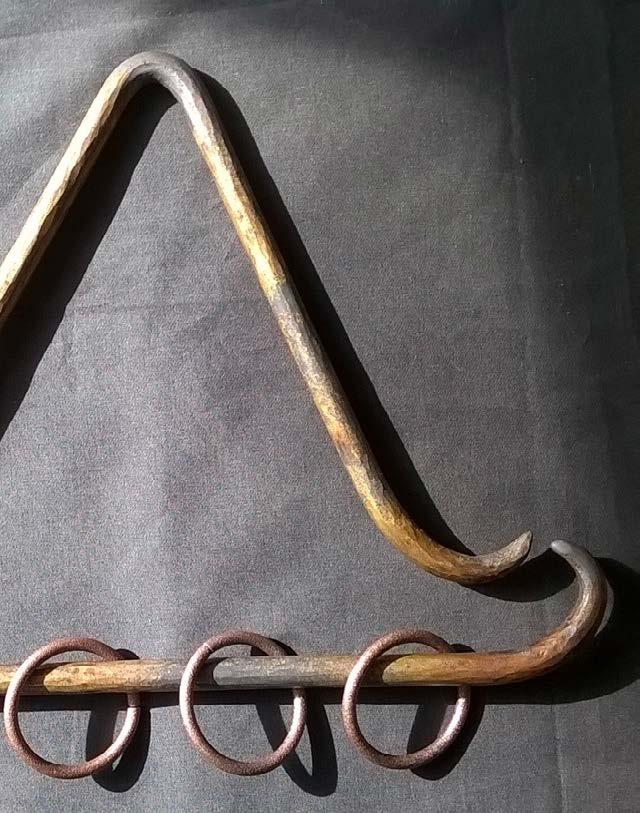
4 minute read
TRI SYMPHONY
The triangle is a musical instru ment that gets a bit of a bad rap. It’s developed the reputation for being really easy, sort of gratuitous, and not exactly very interesting at all.
We’ll look, in fact, at everything that a beginner needs to play the triangle.
Advertisement
And you might not think it, but there’s a lot to know about the instrument. So, let’s get cracking.
What is the Triangle?
However, this is not really very fair at all – as it is not in the least bit true. Rather, triangles –believe it or not – are actually really important instruments with a long and illustrious history. They are not just kids’ toys or instruments for beginner percussionists at all.
Here, we’re going to look at some of the most important aspects of the triangle – from its history to its central techniques, from some famous triangle performances to the places where you can find yourself a triangle teacher.
The triangle is a percussion instrument that is made of a steel rod bent into the shape of – you guessed it – a triangle. And, as a percussion instrument, it is struck – most commonly with a metal beater, to give the instrument a bright, ringing tone. Like the marimba and the xylophone, the triangle is an idiophone – or an instrument that, when struck, vibrates as a whole.
Something that you may have noticed is that the triangle is not quite a full triangle. Rather, one of the corners is missing.
There’s a reason for this. If the instrument was a Orchestral Triangle, google images full triangle, it is being struck would give a single pitch. However, that’s not quite what happens with a triangle as it is. Rather, a triangle produces lots of overtones, or harmonics – which gives the instrument its distinctive sound.
The triangle itself aside, you will need what is conventionally known as a ‘triangle holder’ too – a loop from which the triangle is suspended – so that you don’t mute the instrument’s resonance.
Now, apart from in the classroom, you’ll actually find the triangle in a lot of different musical contexts. In samba music, in a lot of Brazilian traditional music, and in classical music too. And, by the way, we’d say that if Brahms is happy to put the triangle to use, there is no reason why you should think it’s daft yourself.
A Brief History
So why does this instrument even exist? What has caused something so simple – and objectively so limited – to be found in different genres all over the world?
“it goes back for hundreds and hundreds of years”
The answer, actually, is quite interesting, as it goes back for hundreds and hundreds of years.
The first known reference to a triangle comes from the tenth century when it is seen in a book manuscript. Since then, images of a triangle are seen in medieval editions of the Bible, in stain-glass windows, and in a lot of Christian iconographies. Indeed, according to some sources, the triangle is only beaten by the cymbal as the most common instrument played by angels in religious images.
Again, this would seem to us like further support for the fact that maybe the triangle isn’t such a useless instrument after all. It has been around for potentially a thousand years!

From these religious origins, the triangle began to be incorporated into European orchestral works in the eighteenth century, by composers like Brahms, Mozart, and Liszt. This resurgence of interest in the instrument was apparently due to the fact that Turkish musicians who were popular at the time used the instrument a lot.
Moreover, as we mentioned, the instrument became popular in styles of Brazilian music – including samba and forró.
Triangle Through Time
As with many percussion instruments, the triangle is not just a single thing. Rather, it comes in all different shapes and sizes. Triangles tend to come in a standard size of five inches, yet they also come in six inches, seven inches, and eight. The different sizes will affect the sound that the instrument produces: larger ones will be louder, yes, but they will produce lower pitches, owing to the differences in vibration.
Sometimes, triangles can come with a stand – but more often they are played with a holder or string loop as we discussed above.
The very old – we’re talking medieval – types of triangles would have had rings attached to the bottom side of the instrument. When the triangle was struck, these rings would jingle almost like a tambourine. And whilst this sounds cool, you don’t really find these at all anymore.
Triangle Performances You Should Know
To demonstrate to you that the triangle is not simply a joke instrument or a toy, it is worth looking at some places where it has been put to extraordinary use. And, as you’ll see, these create an amazing effect without which their pieces of music would be severely lacking.
Johannes Brahms – Symphony #4 (Third Movement)
One of the most famous uses of the triangle in classical music is in the third movement of Brahms’s Fourth Symphony. Throughout this triumphant, joyful movement, the triangle contributes a strange, ethereal effect that adds atmosphere to the piece.
And if you have seen any video of an orchestra performing this piece, you will have noticed the look of concentration on the triangle player’s face.
Franz Liszt – Piano Concerto No. 1 (Second Movement)
Mocked once upon a time as a ‘Triangle Concerto’ – due to the fact that the triangle features heavily – Liszt’s first piano concerto is an astonishing piece.
Lead, in a sense, by the triangle, the second movement’s second part is full of frantic piano lines and our percussion instrument’s constant presence.
Sérgio Mendes & Brasil ’66 –Casa Forte
We said that a considerable amount of Brazilian music features frequent use of the triangle.
An example of this is in Sérgio Mendes’s ‘Casa Forte’, a wild bossa nova track with a strong percussion section. Here, the triangle is heard in its different style: not just with its piercing ring but used in its percussive mode too.





